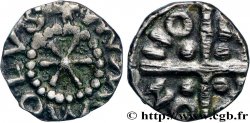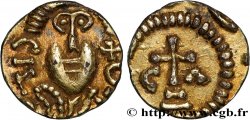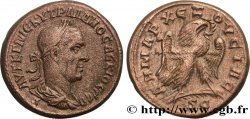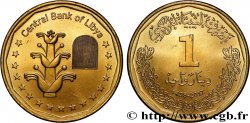v25_0806 - CHALON - SUR - SAÔNE (CABILONNUM) Denier à la croix
MONNAIES 25 (2006)
起拍价 : 450.00 €
估价 : 900.00 €
竞价记录 : 595.00 €
出价数量 : 2
最高出价 : 910.00 €
起拍价 : 450.00 €
估价 : 900.00 €
竞价记录 : 595.00 €
出价数量 : 2
最高出价 : 910.00 €
种类 Denier à la croix
日期: n.d.
铸币厂名称/城市 71 - Chalon-sur-Saône
材质 silver
直径 11 mm
模子方针 12 h.
重量 1,20 g.
稀少度 UNIQUE
关于品相的说明
Ce denier est frappé sur un flan oblong et irrégulier laissant une partie des légendes hors flan. Les reliefs sont nets sur les deux faces. Une patine foncée recouvre les champs de cet exemplaire
出版目录中的项代码 :
正面
正面的说明书 Crois à six branches dans un grènetis ; légende autour.
背面
背面的文字 CA - (...) - (...) - IXI.
背面的说明书 Croix cantonnée d’un globule dans chaque canton ; légende en quatre parties.
评论
Denier du type de Chalon-sur-Saône, mais avec une légende de revers partielle et à la terminaison IXI inédite.
Tous ces deniers dérivent du bronze TEVDEBERTE / CA-BI-LON-NV (cf. Ponton d'Amécourt, pl. VI, n° 132) attribué à Théodebert Ier. La croix à six branches est considérée par certains comme étant un chrisme. Les deniers de Chalons sont classés selon le nom inscrit au droit ; BADOINVS, MVMMOLVS, MAROL, BIL...INVS, ABBO, NERTVNVS, INPORTVNVS ou BOBO. Mis à part cette inscription du droit, l'évolution de l'épigraphie CABILONNO, au revers, permet de proposer une datation relative. La chronologie proposée par Ponton d'Amécourt est la suivante ; CA BI LON NV, CA BIL ON NO, CA BL ON NO, puis enfin CA BLO NN O+. A l'aide de ces exemples, notre légende peut être restituée CA BIL ON IXI ou I+I. Certains exemplaires ont une croisette en début de légende (n° 133) ou en fin de légende (n° 136 -138). Dans cette hypothèse, nous aurions alors la légende CABILONI + I. Toutes les légendes répertoriées, tant sur le monnayage d'or que d'argent, ont pourtant NO comme terminaison.
Denier of the Chalon-sur-Saône type, but with a partial reverse legend and the unpublished ending IXI. All these deniers derive from the bronze TEVDEBERTE / CA-BI-LON-NV (cf. Ponton d'Amécourt, pl. VI, n° 132) attributed to Théodebert I. The six-branched cross is considered by some to be a chrism. The deniers of Chalons are classified according to the name inscribed on the obverse; BADOINVS, MVMMOLVS, MAROL, BIL...INVS, ABBO, NERTVNVS, INPORTVNVS or BOBO. Apart from this obverse inscription, the evolution of the epigraphy CABILONNO, on the reverse, allows us to propose a relative dating. The chronology proposed by Ponton d'Amécourt is as follows: CA BI LON NV, CA BIL ON NO, CA BL ON NO, then finally CA BLO NN O+. Using these examples, our legend can be restored as CA BIL ON IXI or I+I. Some examples have a cross at the beginning of the legend (no. 133) or at the end of the legend (no. 136-138). In this hypothesis, we would then have the legend CABILONI + I. All the legends listed, both on gold and silver coinage, have NO as the ending.
Tous ces deniers dérivent du bronze TEVDEBERTE / CA-BI-LON-NV (cf. Ponton d'Amécourt, pl. VI, n° 132) attribué à Théodebert Ier. La croix à six branches est considérée par certains comme étant un chrisme. Les deniers de Chalons sont classés selon le nom inscrit au droit ; BADOINVS, MVMMOLVS, MAROL, BIL...INVS, ABBO, NERTVNVS, INPORTVNVS ou BOBO. Mis à part cette inscription du droit, l'évolution de l'épigraphie CABILONNO, au revers, permet de proposer une datation relative. La chronologie proposée par Ponton d'Amécourt est la suivante ; CA BI LON NV, CA BIL ON NO, CA BL ON NO, puis enfin CA BLO NN O+. A l'aide de ces exemples, notre légende peut être restituée CA BIL ON IXI ou I+I. Certains exemplaires ont une croisette en début de légende (n° 133) ou en fin de légende (n° 136 -138). Dans cette hypothèse, nous aurions alors la légende CABILONI + I. Toutes les légendes répertoriées, tant sur le monnayage d'or que d'argent, ont pourtant NO comme terminaison.
Denier of the Chalon-sur-Saône type, but with a partial reverse legend and the unpublished ending IXI. All these deniers derive from the bronze TEVDEBERTE / CA-BI-LON-NV (cf. Ponton d'Amécourt, pl. VI, n° 132) attributed to Théodebert I. The six-branched cross is considered by some to be a chrism. The deniers of Chalons are classified according to the name inscribed on the obverse; BADOINVS, MVMMOLVS, MAROL, BIL...INVS, ABBO, NERTVNVS, INPORTVNVS or BOBO. Apart from this obverse inscription, the evolution of the epigraphy CABILONNO, on the reverse, allows us to propose a relative dating. The chronology proposed by Ponton d'Amécourt is as follows: CA BI LON NV, CA BIL ON NO, CA BL ON NO, then finally CA BLO NN O+. Using these examples, our legend can be restored as CA BIL ON IXI or I+I. Some examples have a cross at the beginning of the legend (no. 133) or at the end of the legend (no. 136-138). In this hypothesis, we would then have the legend CABILONI + I. All the legends listed, both on gold and silver coinage, have NO as the ending.







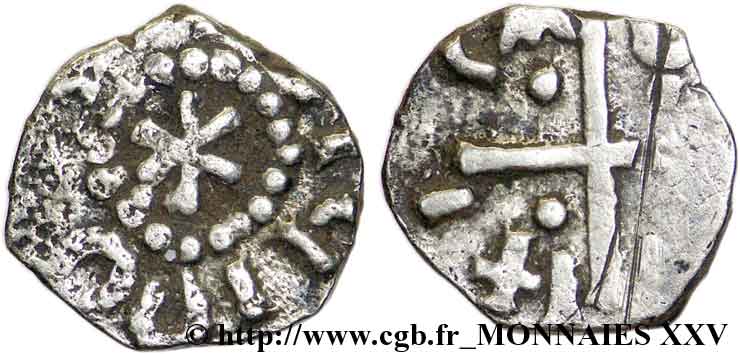
 对产品描述纠错
对产品描述纠错 打印
打印 分享我的选择
分享我的选择 提问
提问 Consign / sell
Consign / sell
 产品介绍
产品介绍


